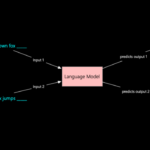How to Build a Data Warehouse from Scratch: Cost + Examples
Building a data warehouse from scratch can seem overwhelming, but it is a game-changer for organizations aiming to harness data for informed decision-making. While the initial investment in time and resources might be substantial, the long-term benefits—such as improved data quality, actionable insights, and streamlined operations—are undeniable.
This blog explores the key components, steps, and costs involved in building a data warehouse, along with a real-world example to help you get started.
What is a Data Warehouse?
A data warehouse is a centralized repository that consolidates data from diverse sources into a structured, easily accessible format. It is designed for analysis and reporting purposes, enabling organizations to gain a comprehensive view of their operations, identify trends, and make informed decisions based on historical and current data. A data warehouse also serves as the foundation for business intelligence (BI) projects.
Key Components of a Data Warehouse:
Data Sources – Origins of data, such as databases, CRM systems, flat files, and APIs, which can vary in format and volume.
ETL (Extract, Transform, Load) – A process to extract data from multiple sources, transform it into a suitable format, and load it into the central repository.
Data Warehouse Database – The central repository, often a relational database management system (RDBMS), optimized for complex queries and analytics.
Metadata Repository – Stores information such as data definitions, data lineage, and relationships, making data easier to understand and use.
Query and Reporting Tools – Tools for extracting insights, running ad-hoc queries, and creating dashboards.
6 Steps to Build a Data Warehouse from Scratch
Here’s a step-by-step guide to creating a data warehouse:
1. Define Business Requirements
Identify your organization’s goals, the types of data needed, and the key users and stakeholders. Align the warehouse design with your data strategy to manage complexity, prioritize resources, and deliver value incrementally.
2. Choose a Platform
Select a platform that matches your organization’s scale and data volume:
Cloud-based Solutions: Google BigQuery, Amazon Redshift, or Microsoft Azure for scalability and ease of use.
On-premises Solutions: Oracle for greater control and customization.
3. Design the Data Model
A well-defined data model ensures efficient storage and retrieval:
Conceptual Data Model – Identifies core business entities (e.g., customers, products) and their attributes.
Logical Data Model – Defines entities, attributes, constraints, keys, and relationships in detail.
Physical Data Model – Translates the logical model into a database structure, including tables, columns, and indexes.
4. Build the ETL Pipeline
An ETL pipeline ensures a smooth flow of data:
Extract data from sources such as databases and CRM systems.
Transform it by cleaning, standardizing, and aligning it with the warehouse schema.
Load the transformed data into the data warehouse.
5. Develop Reporting and Analytics
Choose BI tools like Power BI, Tableau, or Qlik Sense to create reports, dashboards, and visualizations. These tools help you present actionable insights in an accessible format.
6. Implement Ongoing Maintenance and Optimization
Regular maintenance ensures sustained performance:
Monitor for errors and inconsistencies.
Apply performance tuning techniques like indexing and query optimization.
Update software and security patches, and implement alert mechanisms to minimize downtime.
Cost Estimation of Building a Data Warehouse
Building a data warehouse involves several cost components:
1. Data Warehouse Storage Costs
Cloud Solutions – Pay-as-you-go pricing models:
Snowflake: Starts at $23 per terabyte (TB) per month.
Microsoft Azure Synapse Analytics: Starts at $122.88 per TB per month.
On-premises Solutions – Initial investments start at approximately $3,500.
2. ETL & Data Integration Costs
ETL tools typically cost between $99 and $2,000 per month, depending on data complexity and required features.
3. BI and Visualization Software
BI tools like Tableau and Power BI range from $600 to $6,000 annually, with an average cost of $3,000 per year.
4. Labor Costs
Key personnel involved in the project:
Data Engineers: $92,352 annually.
Database Administrators: $114,515 annually.
Data Analysts: $61,212 annually.
Example: Building a Data Warehouse for an Online Retailer
Let’s take the example of FashionFusion, an online retailer selling clothing, accessories, and shoes. Here’s how they can build a data warehouse:
Step 1: Define Business Goals
Understand customer purchase patterns to personalize product recommendations.
Identify best-selling and underperforming products to optimize inventory.
Monitor sales trends for demand forecasting.
Step 2: Choose the Right Platform
FashionFusion selects Snowflake for its scalability, ease of use, and cost-effectiveness.
Step 3: Design the Data Model
Conceptual Model – Key entities include customers, products, orders, and suppliers.
Logical Model – Attributes like customer ID and order dates; relationships like one-to-many between customers and orders.
Physical Model – Implemented in Snowflake with tables, primary keys, foreign keys, and indexes.
Step 4: Build ETL Pipeline with Airbyte
Airbyte’s pre-built connectors and features like Change Data Capture (CDC) and integration with dbt make it an ideal choice for FashionFusion.
Step 5: Develop Reporting & Analytics
FashionFusion uses Tableau for interactive dashboards and real-time visualizations, covering metrics like sales, inventory, and marketing performance.
Step 6: Maintenance & Optimization
Regular data audits, query performance monitoring, and system updates ensure smooth operations.
Security measures like encryption and multi-factor authentication safeguard data.
How Long Does It Take to Build a Data Warehouse?
Small to Medium-Sized Projects – A few weeks to several months.
Large and Complex Projects – Several months to over a year.
Conclusion
Building a data warehouse from scratch may seem complex, but with the right approach, tools, and planning, it is achievable for businesses of all sizes. From defining business requirements to implementing efficient ETL pipelines and developing analytics, a well-structured data warehouse unlocks the full potential of your data.
FAQs
What is a data warehouse vs. a database?
A data warehouse is designed for analytical processing and large-scale data analysis, while a database is optimized for transactional processing and daily operations.
What is a data warehouse in SQL?
A centralized repository that uses SQL-based tools for querying and analyzing large volumes of structured data.
What is the main function of a data warehouse?
To consolidate and store data from multiple sources for efficient querying, reporting, and analysis.






















